39142 netter65
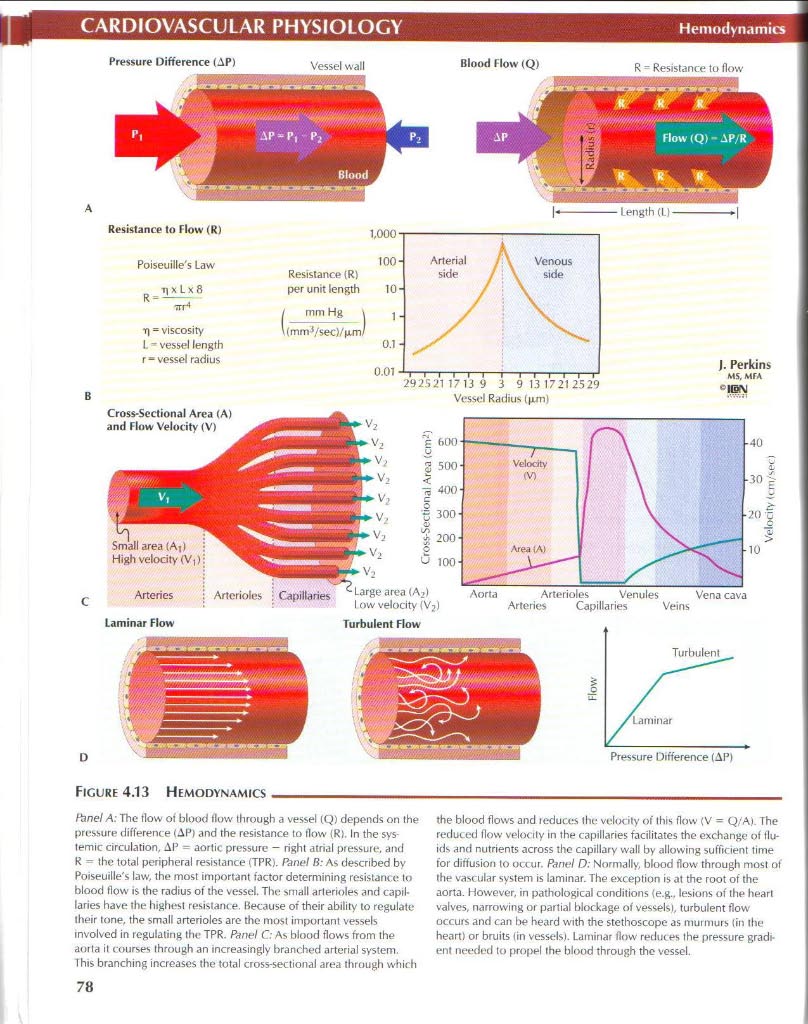
Hemodynamics
CARDIOVASCULAR PHYSIOLOCY
Pressure Difference (AP)
= Resistance to flow

Resistance to Flow (R)
|
Poiseuille's Law |
Resistance (R) |
100 |
|
itxLx8 R |
per unit length |
10 |
|
( mmHg \ |
1 | |
|
T) = viscosity L - vessel length |
0.1 | |
|
r “ vessel radius |
0.01 |
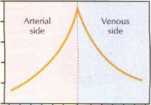
292521 1713 9 3 9 13 17212529 Vcs$d Radiu* (|un)
J. Perkins
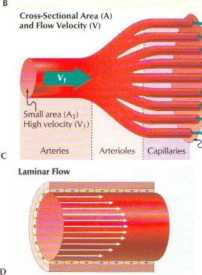
|
rv2 | |
|
L*v2 |
g f»00 |
|
Ł* V, |
a 3 500 |
|
m+v2 |
< * *X) |
|
| 300- | |
|
Lv |
% 200- |
|
Łv, > V2 |
0 100- |
|
-Large are |
a (A2) |
|
lowvełodty (V2) | |
Turbulent Flow
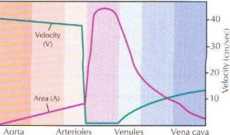
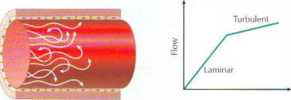
Pressure Difference (AP)
Figurę 4.13 Hemodynamics
Panel A: The tlow of blood (Iow through a vessel (Q) depends on the pressure difference (AP) and the resistance to tlow (R). In the systemie circulation, AP = aortic pressure — right atrial pressure, and R = the total peripheral resistance (TPR). Panel B: As described by Poiseuille's law, the most important factor determining resistance to blood flow i$ the radius of the vessel. The smali arterides and capil* laries have the highest resistance. Because of their ability to regulate their tonę, the smali arterioles are the most important vessels involved in regulating the TPR. Panel C: As blood flows from the aorta it courses through an increasingly branched arterial system.
This branching inereases the total cross-sectional area through which the blood flows and reduces the velocity of this flow (V = Q/A). The reduced flow velocity in the capillaries facilitates the exchange of fluid* and nutrients across the capillary wali by allowing sufficient time for diffusion to occur. Panel D: Normally, blood flow through most of the vascular system is laminar. The exception is at the root of the aorta. However, in pathological conditions <e.g., lesions of the heart valves, narrowing or partial blockage of vessels), turbulent flow occurs and can be heard with the stethoscope as murmurs (in the heart) or bruits (in yessels). Laminar flow reduces the pressure gradient needed to pro|>el the blood through the vessel.
78
Wyszukiwarka
Podobne podstrony:
netter85 RESPIRATORY PHYSIOLOGYMechanits of Respiration: Airway Flo» Laminar flow occurs mainly in s
netter53 CARDIOVASCULAR PHYSIOLOGY Overview of thc Cardiovascular System Pulmonary
netter62 Cardiac Output: Prcssurc-Volumc LoopCARDIOVASCULAR PHYSIOLOGY Pressure (mm Hg> f Preload
netter84 tlechanics of Respiration: Surface ForcesRESPIRATORY PHYSIOLOGY Pressure (cm HjO) alveoli i
45953 netter81 RESPIRATORY PHYSIOLOGYMechanics of Rcspiration: Forces during Quict Breathin pressure
59840 netter71 CARDIOVASCULAR PHYSIOLOCY Short-Term Regulation of Blood Pressure 2/3t „NE Ganglion-
80805 netter84 tlechanics of Respiration: Surface ForcesRESPIRATORY PHYSIOLOGY Pressure (cm HjO) alv
netter84 tlechanics of Respiration: Surface ForcesRESPIRATORY PHYSIOLOGY Pressure (cm HjO) alveoli i
więcej podobnych podstron